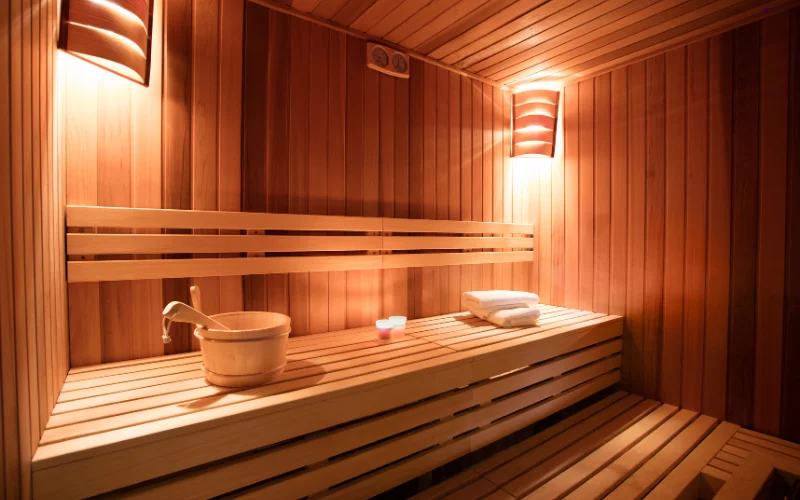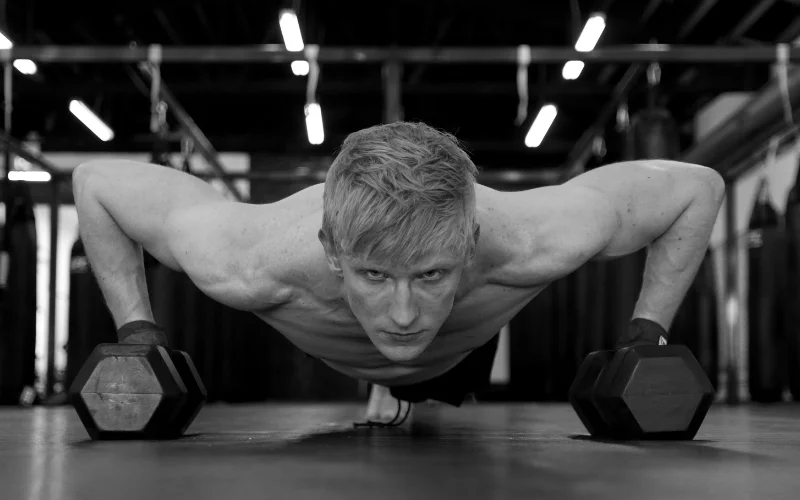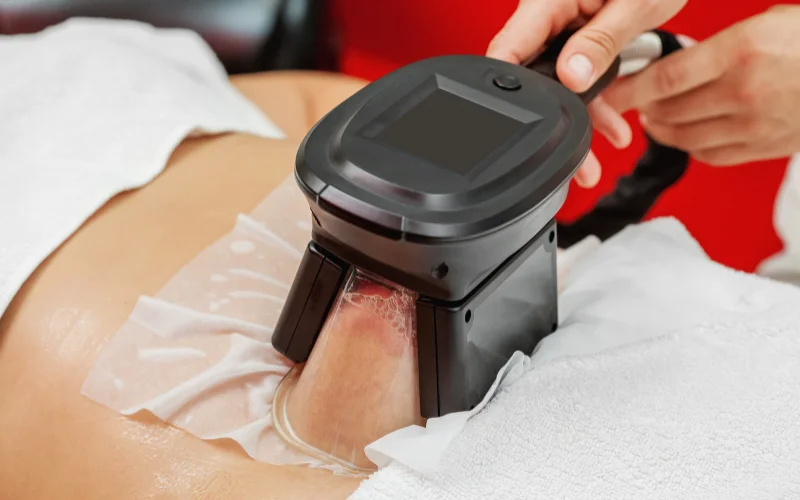In seeking effective weight loss strategies, many individuals are turning to unconventional methods. One such method that has garnered attention is the use of saunas. But does sauna help you lose weight? This article explores the relationship between sauna use and weight loss, providing a detailed analysis of the benefits, mechanisms, and potential risks associated with this practice.
As people continue to search for quick and efficient ways to shed pounds, the allure of sweating it out in a sauna has become increasingly popular. The idea is simple: by sitting in a heated room, your body will sweat profusely, potentially leading to weight loss. However, it’s essential to understand the science behind this method and whether it offers sustainable results. This article delves into how saunas work, their impact on the body, and whether they can genuinely contribute to long-term weight loss.
Does Sauna Help You Lose Weight?

The question “Does sauna help you lose weight?” can be answered with a nuanced understanding. While saunas can lead to temporary water weight loss and may slightly increase caloric burn, they are not a standalone solution for significant weight loss. Saunas should be used as a complementary tool alongside a balanced diet and regular exercise.
Several studies have investigated the effects of sauna use on weight loss. A study published in the Journal of the American Medical Association found that a 30-minute sauna session could burn around 300 calories. However, this caloric burn is minimal compared to the calories burned during physical exercise.
How Saunas Work?

Saunas are specially designed rooms that are heated to high temperatures, typically between 150°F and 195°F (65°C to 90°C). The high heat environment causes the body to sweat, which can lead to temporary weight loss due to fluid loss. While some may wonder how to lose belly fat overnight, it’s important to note that saunas primarily contribute to temporary water weight loss rather than targeted fat loss. The heat can be dry or accompanied by steam, depending on the type of sauna. The primary function of a sauna is to induce sweating, which is believed to offer various health benefits.
Here’s a closer look at how saunas operate and their effects on the body:
- Heat Generation: Saunas generate heat using various methods, including electric heaters, wood-burning stoves, or infrared panels.
- Sweat Production: The primary response to the high temperature is increased sweat production, which can lead to fluid loss.
- Thermoregulation: The body reacts to the heat by initiating sweating to cool down, which can temporarily reduce water weight.
- Endorphin Release: The heat can stimulate the release of endorphins, promoting a sense of well-being and relaxation.
Understanding these mechanisms can help you make an informed decision about incorporating sauna sessions into your weight loss regimen.
Types of Saunas

Saunas come in various forms, each offering unique benefits and experiences.
Traditional Finnish Saunas
Traditional Finnish saunas are the most well-known and widely used. These saunas utilize dry heat generated by either a wood-burning stove or an electric heater.
Infrared Saunas
Infrared saunas represent another popular type. Unlike traditional saunas, infrared saunas use infrared light to heat the body directly rather than heating the air around you.
Steam Rooms
Steam rooms, often found in spas and gyms, offer a different experience than dry saunas. They use moist heat and maintain high humidity levels, operating at slightly lower temperatures.
| Type of Sauna | Heat Source | Temperature Range | Humidity Level | Key Benefits |
| Traditional Finnish | Wood/electric stove | 150°F – 195°F | Low | Deep relaxation, detoxification |
| Infrared | Infrared light | 120°F – 140°F | Low | Deep tissue heating, lower temp |
| Steam Room | Steam generator | 110°F – 120°F | High | Skin health, respiratory relief |
Benefits of Sauna Weight Loss

Using a sauna can aid in weight loss by promoting sweating, increasing heart rate, and boosting metabolism. While it is not a substitute for a healthy diet and exercise, incorporating sauna sessions can complement your weight loss efforts.
Temporary Weight Loss
One of the immediate effects of spending time in a sauna is sweating. This leads to a temporary loss of water weight. While this can result in a lower number on the scale, it is important to note that this weight loss is not fat loss and will be regained once you rehydrate.
Increased Caloric Burn
Saunas can elevate your heart rate, similar to the effects of moderate exercise. This increase in heart rate can lead to a higher calorie burn. However, the number of calories burned during a sauna session is relatively low compared to traditional exercise.
Detoxification
Sweating is one of the body’s natural ways to eliminate toxins. During a sauna session, you sweat profusely, which can help flush out impurities and toxins from your body. This detoxification process can support overall health and may contribute to weight loss by improving metabolic function.
Improved Circulation
The heat from a sauna can improve blood circulation, aiding in muscle recovery and reducing soreness after workouts. This can make maintaining a consistent exercise routine easier, indirectly supporting weight loss.
Stress Relief
Stress can lead to weight gain by increasing the production of cortisol, a hormone that promotes fat storage. Saunas are known for their relaxing effects, which can help reduce stress levels. Lowering your stress can, in turn, help regulate cortisol levels and support weight loss efforts.
Skin Health
Sweat induced by saunas can help cleanse the skin and improve its appearance. It can open up pores and remove impurities, leading to healthier-looking skin.
Cardiovascular Health
Regular sauna use has been linked to improved cardiovascular health. The heat can help to lower blood pressure and improve heart function.
How Long Should You Stay in a Sauna for Optimal Benefits?

For most individuals, a sauna session should last 15 to 20 minutes. This duration is typically sufficient to experience the benefits of increased circulation, relaxation, and mild detoxification without overtaxing your body. It’s crucial to listen to your body’s signals during the session; if you start to feel dizzy, lightheaded, or excessively uncomfortable, it’s essential to exit the sauna immediately.
Hydration is key to a safe sauna experience. Always ensure you are well-hydrated before entering the sauna and drink plenty of water before, during, and after your session to replenish the fluids lost through sweating. If you are new to using saunas, start with shorter sessions of around 5 to 10 minutes and gradually increase the duration as your body becomes accustomed to the heat.
By following these guidelines, you can enjoy the therapeutic benefits of sauna use while minimizing the risks associated with prolonged exposure to high temperatures.
Dangers of Dehydration

Dehydration occurs when your body loses more fluids than it takes in, which can seriously affect your health. When you sweat excessively, especially in a sauna, you lose water and essential electrolytes like sodium, potassium, and magnesium. These electrolytes are crucial for maintaining the balance of fluids in your body and for proper muscle and nerve function. Severe dehydration can lead to symptoms such as dizziness, confusion, rapid heartbeat, and even fainting. In extreme cases, it can cause heat stroke, kidney damage, and other life-threatening conditions. Therefore, it’s essential to stay hydrated, especially when engaging in activities that cause excessive sweating, to avoid these potential dangers.
Signs of Dehydration
- Dry Mouth and Throat: A lack of saliva can make your mouth and throat dry and sticky.
- Dark-Colored Urine: Urine that is darker than usual indicates that your body is conserving water.
- Fatigue: Feeling unusually tired or lethargic can be a sign that your body is dehydrated.
- Dizziness or Lightheadedness: A lack of fluids can cause a drop in blood pressure, leading to dizziness.
- Rapid Heartbeat: Dehydration can cause your heart to work harder to pump blood, resulting in a faster heartbeat.
- Headache: Dehydration can cause headaches due to reduced fluid levels affecting brain function.
- Dry Skin: Skin that lacks moisture and elasticity can be a sign of dehydration.
Conclusion
In conclusion, the question “Does sauna help you lose weight?” raises a mix of facts and myths. While saunas can contribute to temporary weight loss through water loss and offer various health benefits, such as improved circulation and relaxation, they should not replace conventional weight loss methods. A balanced diet, regular exercise, and healthy lifestyle choices are crucial for sustainable weight loss.
FAQs
1. Can using a sauna help me lose belly fat?
Saunas can temporarily help you lose water weight, but they do not specifically target belly fat. Focus on diet, exercise, and overall lifestyle changes for effective belly fat reduction.
2. How long should I stay in a sauna for weight loss benefits?
A typical sauna session lasts 15 to 30 minutes. Staying longer can increase the risk of dehydration, so it’s essential to listen to your body and stay hydrated.
3. Are there any risks associated with using a sauna for weight loss?
Yes, there are risks, such as dehydration, overheating, and potential cardiovascular strain. Always consult with a healthcare professional before incorporating sauna sessions into your weight loss regimen.







